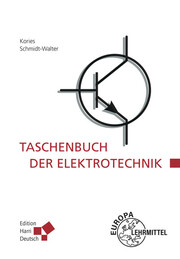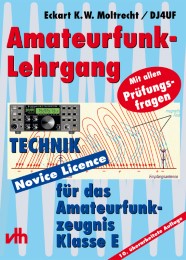Silicon-on-Insulator Technology (gebundenes Buch)
Silicon-on-Insulator Technology
Materials to VLSI
Erschienen am
29.02.2004
Bibliographische Informationen
ISBN/EAN: 9781402077739
Sprache: Englisch
Seiten: xiii, 366 S.
Bindung: gebundenes Buch
Beschreibung
Inhaltsangabe1 Introduction.- 2 SOI Materials.- 2.1 Introduction.- 2.2 Heteroepitaxial techniques.- 2.2.1 Silicon-on-Sapphire (SOS).- 2.2.2 Other heteroepitaxial SOI materials.- 2.2.2.1 Silicon-on-Zirconia (SOZ).- 2.2.2.2 Silicon-on-Spinel.- 2.2.2.3 Silicon on Calcium Fluoride.- 2.3 Dielectric Isolation (DI).- 2.4 Polysilicon melting and recrystallization.- 2.4.1 Laser recrystallization.- 2.4.2 E-beam recrystallization.- 2.4.3 Zone-melting recrystallization.- 2.5 Homoepitaxial techniques.- 2.5.1 Epitaxial lateral overgrowth.- 2.5.2 Lateral solid-phase epitaxy.- 2.6 FIPOS.- 2.7 Ion beam synthesis of a buried insulator.- 2.7.1 Separation by implanted oxygen (SIMOX).- 2.7.1.1 "Standard"SIMOX.- 2.7.1.2 Low-dose SIMOX.- 2.7.1.3 ITOX.- 2.7.1.4 SMOXMLD.- 2.7.1.5 Related techniques.- 2.7.1.6 Material quality.- 2.7.2 Separation by implanted nitrogen (SIMNI).- 2.7.3 Separation by implanted oxygen and nitrogen (SIMON).- 2.7.4 Separation by implanted Carbon.- 2.8 Wafer Bonding and Etch Back (BESOI).- 2.8.1 Hydrophilic wafer bonding.- 2.8.2 Etch back.- 2.9 Layer transfer techniques.- 2.9.1 Smart-Cut®.- 2.9.1.1 Hydrogen / rare gas implantation.- 2.9.1.2 Bonding to a stiffener.- 2.9.1.3 Annealing.- 2.9.1.4 Splitting.- 2.9.1.5 Further developments.- 2.9.2 Eltran®.- 2.9.2.1 Porous silicon formation.- 2.9.2.2 The original Eltran® process.- 2.9.2.3 Second-generation Eltran® process.- 2.9.3 Transferred layer material quality.- 2.10 Strained silicon on insulator (SSOI).- 2.11 Silicon on diamond.- 2.12 Silicon-on-nothing (SON).- 3 SOI Materials Characterization.- 3.1 Introduction.- 3.2 Film thickness measurement.- 3.2.1 Spectroscopic reflectometry.- 3.2.2 Spectroscopic ellipsometry.- 3.2.3 Electrical thickness measurement.- 3.3 Crystal quality.- 3.3.1 Crystal orientation.- 3.3.2 Degree of crystallinity.- 3.3.3 Defects in the silicon film.- 3.3.3.1 Most common defects.- 3.3.3.2 Chemical decoration of defects.- 3.3.3.3 Detection of defects by light scattering.- 3.3.3.4 Other defect assessment techniques.- 3.3.3.5 Stress in the silicon film.- 3.3.4 Defects in the buried oxide.- 3.3.5 Bond quality and bonding energy.- 3.4 Carrier lifetime.- 3.4.1 Surface Photovoltage.- 3.4.2 Photoluminescence.- 3.4.3 Measurements on MOS transistors.- 3.4.3.1 Accumulation-mode transistor.- 3.4.3.2 Inversion-mode transistor.- 3.4.3.3 Bipolar effect.- 3.5 Silicon/Insulator interfaces.- 3.5.1 Capacitance measurements.- 3.5.2 Charge pumping.- 3.5.3 ?-MOSFET.- 4 SOI CMOS Technology.- 4.1 SOI CMOS processing.- 4.1.1 Fabrication yield and fabrication cost.- 4.2 Field isolation.- 4.2.1 LOCOS.- 4.2.2 Mesa isolation.- 4.2.3 Shallow trench isolation.- 4.2.4 Narrow-channel effects.- 4.3 Channel doping profile.- 4.4 Source and drain engineering.- 4.4.1 Silicide source and drain.- 4.4.2 Elevated source and drain.- 4.4.3 Tungsten clad.- 4.4.4 Schottky source and drain.- 4.5 Gate stack.- 4.5.1 Gate material.- 4.5.2 Gate dielectric.- 4.5.3 Gate etch.- 4.6 SOI MOSFET layout.- 4.6.1 Body contact.- 4.7 SOI-bulk CMOS design comparison.- 4.8 ESD protection.- 5 The SOI MOSFET.- 5.1 Capacitances.- 5.1.1 Source and drain capacitance.- 5.1.2 Gate capacitance.- 5.2 Fully and partially depleted devices.- 5.3 Threshold voltage.- 5.3.1 Body effect.- 5.3.2 Short-channel effects.- 5.4 Current-voltage characteristics.- 5.4.1 Lim & Fossum model.- 5.4.2 C?-continuous model.- 5.5 Transconductance.- 5.5.1 gm/ID ratio.- 5.5.2 Mobility.- 5.6 Basic parameter extraction.- 5.6.1 Threshold voltage and mobility.- 5.6.2 Source and drain resistance.- 5.7 Subthreshold slope.- 5.8 Ultra-thin SOI MOSFETs.- 5.8.1 Threshold voltage.- 5.8.2 Mobility.- 5.9 Impact ionization and high-field effects.- 5.9.1 Kink effect.- 5.9.2 Hot-carrier degradation.- 5.10 Floating-body and parasitic BJT effects.- 5.10.1 Anomalous subthreshold slope.- 5.10.2 Reduced drain breakdown voltage.- 5.10.3 Other floating-body effects.- 5.11 Self heating.- 5.12 Accumulation-mode MOSFET.- 5.12.1 I-V characteristics.- 5.12.2 Subthreshold slope.- 5.13 Unified body-
Andere Artikel von "Colinge, J -P"
Lieferbar innerhalb 14 Tagen

Lieferbar innerhalb ca. einer Woche

Lieferbar innerhalb 14 Tagen

Lieferbar innerhalb 14 Tagen

Weitere Artikel aus der Kategorie "Technik/Elektronik, Elektrotechnik, Nachrichtentechnik"
Vergriffen

Vergriffen

Derzeit nicht verfügbar

Lieferbar innerhalb 14 Tagen









